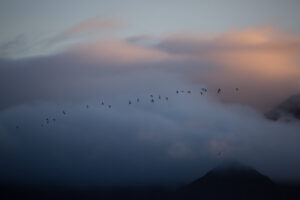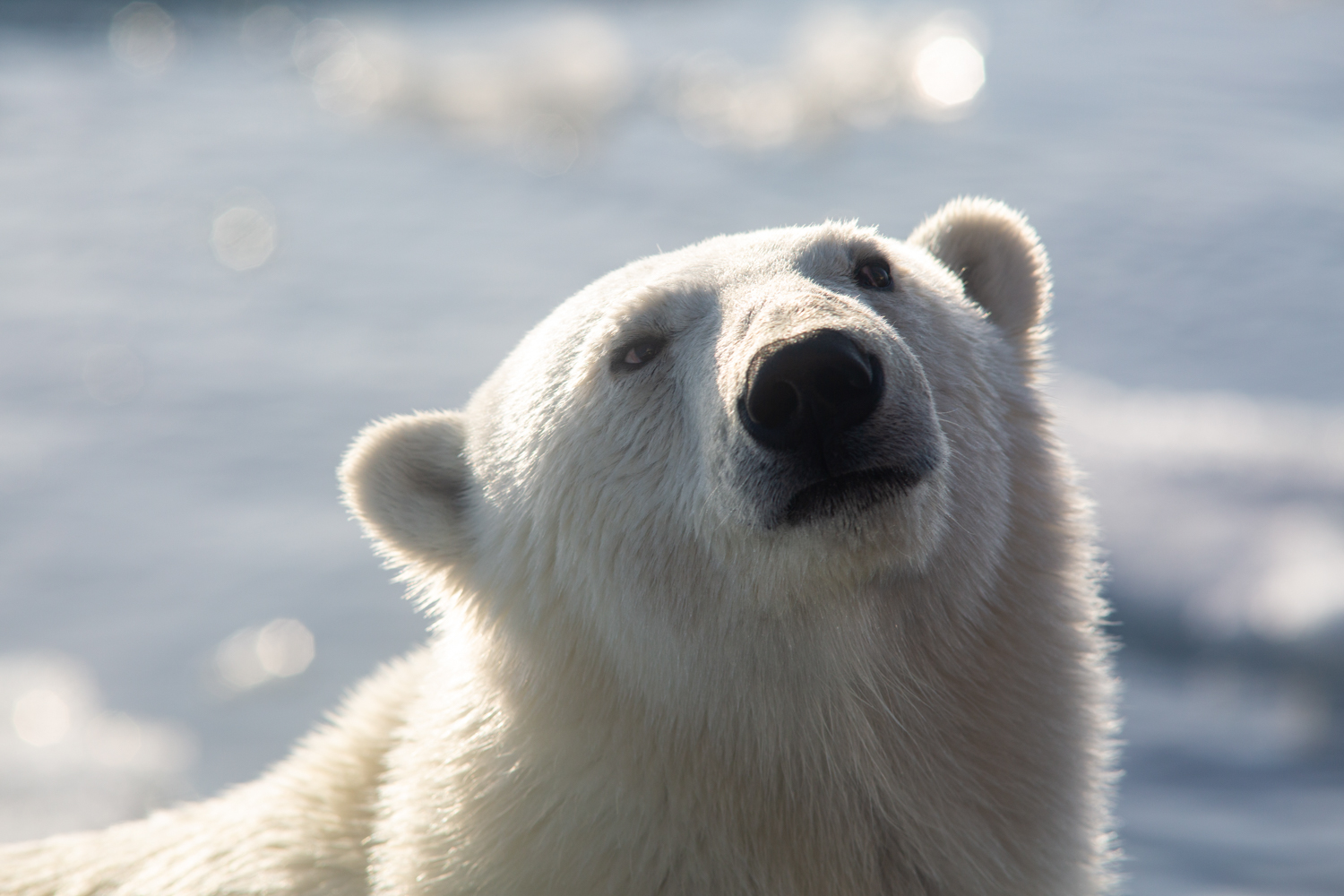Travel this year has been a lucky draw, but we managed to land in Svalbard mid-August, free to embark the MS Origo – a 40-metre expedition ship originally built in 1955- for a ten-day journey in search of all the seas and lands of Svalbard may disclose.
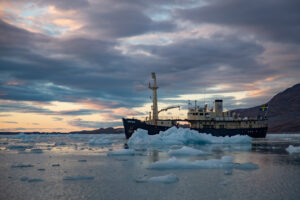
Having lived and breathed the dusty savannahs and sultry rainforests of Africa and South America, digging my fingers into the red soils and crumbly clay, I found myself at the edge of our world this summer, in an unfamiliar environment, hostile to all but a few; cold, barren, tree-less, and utterly enthralling. The Arctic
I was led into a new story, called by its illustrations of amethyst hues against aquamarine, the writing penned in crystal, and all the while the waves of an angry sea lapping at the book’s corners to make the tale that much more precious.

There are moments afloat in our minds, not yet understood or comprehended, like the drifting sea ice in the fog; moments we can’t quite grasp or catch, but which are as enchanting as the glow of the midnight sun. When the light rips through the blanket of clouds and discloses a world of which we had no inkling, the need to immerse ourselves in these new sensations is acute, but the arctic environment and its protagonists hold us at arm’s length. In this polar wilderness we can’t trespass, except with manmade tools or boats that ferry us through, where we can’t obtain or even touch. Our limitations are akin to a pain, an ache, but the same cracks this lack of access cause in us are healed by the sheer beauty of the knowledge that not everything is ours to hold, that there are secrets yet to discover.
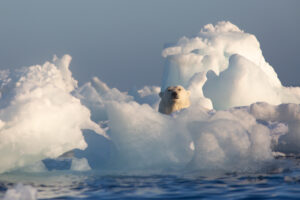
The young polar bear goes to sleep on the frozen float on the edge of the pack-ice, drifting off into twilight, nestled on its side, curled against the rising wind, his eyes closed, ready to persevere against the elements and the winds of change.
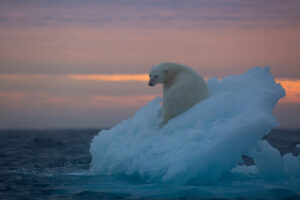
The mountains of “Spitzbergen” are as sharp as the archipelago’s name suggests. Eternal ice and fresh snow cap the triangular shapes amongst which the sea-birds circle in a cacophony of haunting caws and shrieks, gliding over the water on their wing-tips, above an ocean interchanging between forbidding slate grey and sheer emerald gauze.
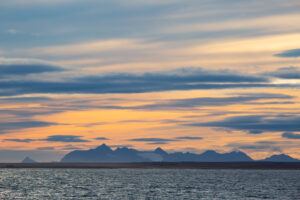
Gargantuan glaciers drop into fjords, where we drift through the ruins of a glass palace succumbed to time, shattered into a million shards of ice like a gigantic broken mirror from which the light reflects and bounces skywards, touching every bird and every mountain tip. The rims of the icebergs are the melting gilded frames that once hung on the walls but now drip their metallic glow into the sea. The demolished pillars and archways form a new, open-ceiling edifice, built from deepest cobalt to purple and alabaster, the working ice’s a constant crackling as we make our way through.
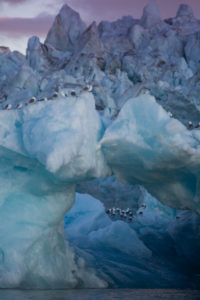
The kittywake’s wings become translucent against the fading sun, the feathers blend into the soft light. The ice they rest on is a study in texture, of marbled and pressurised time-lines, thousands of years trapped in frozen water. Sunrays dance in front of the stark mountains, only the tips brushed in roseate.
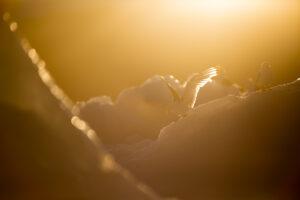
In the midst of this shrine of glacial beauty swims the harbour seal, popping up and diving, like a jester looking for his lost court to come and play. The bearded seal, meanwhile, rests on his slab of ice, content to observe.
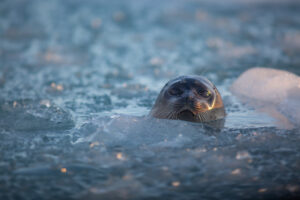
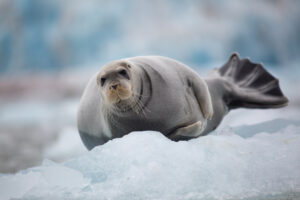
Like a water-monster of Greek mythology, the walrus appear with a breath pungent of fish and a body covered in scraps and barnacles.
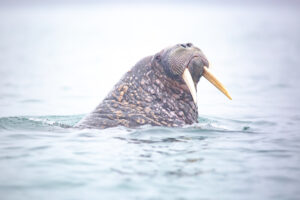
The sun sets for the first time this autumn when we land close to a colony of these marine saber-toothed animals, with as much grace between them as a mountain of potato sacks. By unseen queue, they rush into motion and flop and roll themselves into the sea, the backlit spray sparkling above them, to adorn even these most massif of sea-dwelling mammals with a sprinkling of grace.
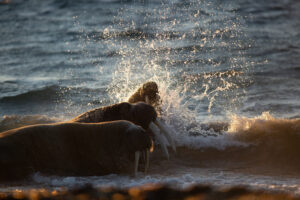
And in these last streams of sunlight, when summer gently glides into autumn, the sheen seems to thin, and this polar world is almost attainable, makes you one of its own, for a short moment only, but long enough for us to be forever entranced.
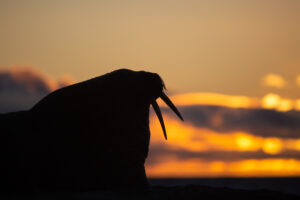
The arctic landscape is changing rapidly, the sea-ice melts, the bears rush to adapt, fighting hunters and traders on top of their diminishing habitat, but still the world seems deaf to calls for protection. The hope remains that the people fighting for this fragile eco-system and its precious inhabitants will prevail and one of the last true wildernesses will remain untamed, to let us know we are not master of all.
